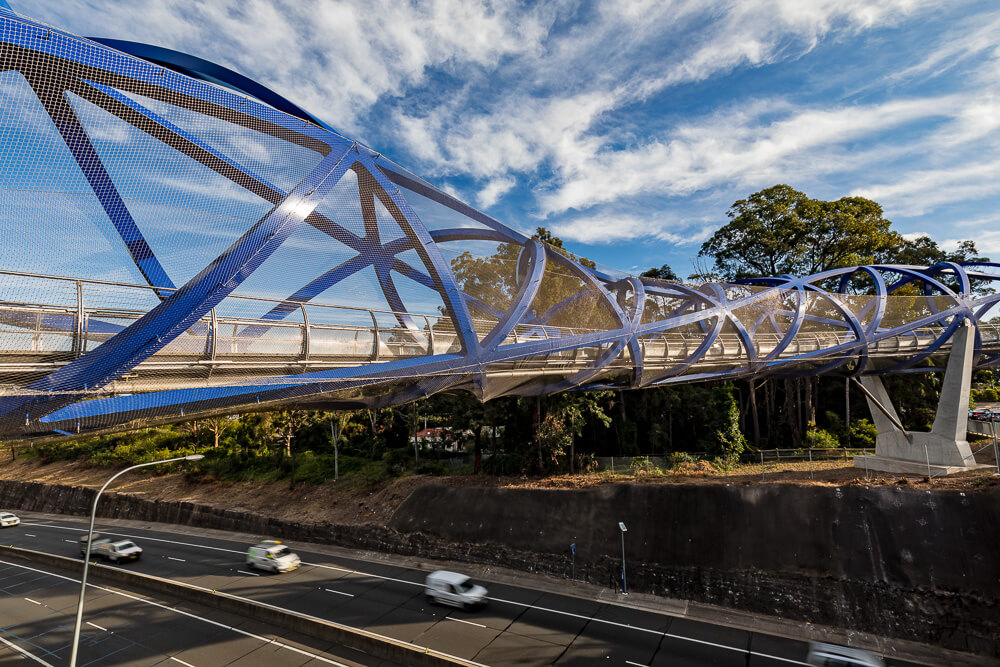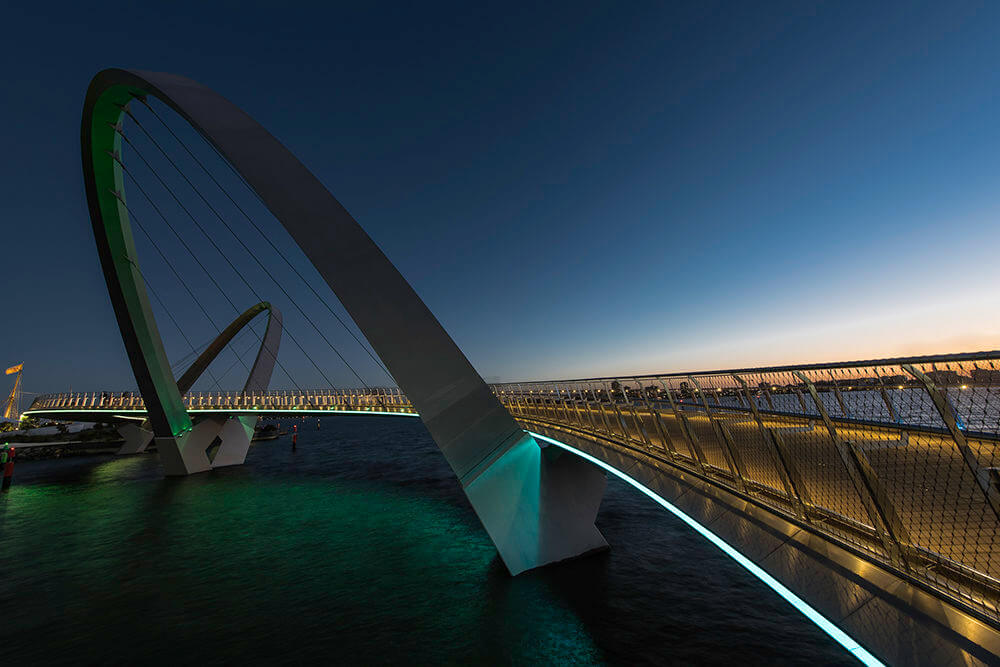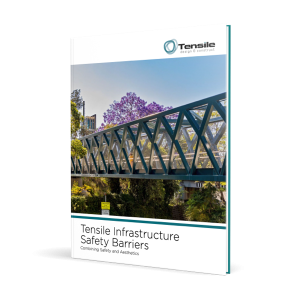Infrastructure projects such as bridges over roads, rail lines and waterways require robust types of fall protection for pedestrians and cyclists.
At Tensile, we specialise in stainless steel Webnet mesh and wire rope to create fall protection solutions for footbridges, which must be compliant with AS5100.2 (barriers for bridges) and AS1170 (structural loads).
Here are some of the different types of fall protection for bridges, and the key safety considerations.
Different types of fall protection for different projects
Being a versatile material, Webnet can be customised to suit a range of bridge barriers and screens. The approach taken to both design and construction depends on the situation.
Modular barriers
Modular Webnet barriers are ideal for fast installation. A modular approach was used for the barrier on the Elizabeth Quay bridge in Perth, which made for a very efficient installation that finished ahead of schedule. Before installation, the mesh for the bridge’s barrier was sized into eight panels, which were matched to the bridge’s curves and integrated into the existing balustrade.
Barriers using Webnet frames
Webnet mesh in prefabricated frames allows barriers to be made off-site, minimising disruption to busy roads and rail lines. We used this method to create the screen for the CBD and South East Light Rail footbridge in Sydney. This enabled us to save time by doing most of our work off-site, bolting the frames into position once the bridge was in place. It also enabled us to meet additional safety requirements, with different aperture sizes of mesh required for different sections over the road and rail line.
We used 40mm Webnet made from 1.5mm wire rope for the barrier on the award-winning Hobart Bridge of Remembrance with its twisting plane design. To minimise installation time, the mesh was sized into full-height panels beforehand.
Anti-throw screens
Anti-throw screens aren’t specified for all footbridges, but are often necessary for structures over busy highways to prevent objects being thrown over the edge onto passing cars.
The Christopher Cassaniti bridge (formerly Lachlan’s Line) required a highly flexible anti-throw screen due to its unique double-helix shape. To get the screen exactly right the Webnet was shaped into 63 unique pieces.
Multi-purpose barriers
The barrier for the Emu Plains Station bridge provides fall protection while also acting as an anti-throw screen. We used 40mm Webnet supported on stainless steel cables for the barrier, which was pre-installed to the bridge off-site.
Safety requirements for types of fall protection
All types of fall protection must address a range of safety issues.

Climb mitigation
Webnet with aperture-openings of no more than 50mm in size is generally deemed to prevent climbing. Webnet of 40mm or 50mm is typically used on footbridges over roads and water courses, and 25mm is used over railways.
Load inputs
The barrier must be able to withstand extreme loads, including forces from crowd panic as well as wind, water and earthquakes. Webnet can easily be designed and tensioned to meet all of the load requirements of a high-use pedestrian and cycle path barrier.
Longevity
The NSW Roads and Maintenance Service for example specifies a minimum of 50 years for barriers. Webnet comes with long warranties and a design life of 50+ years. Being non-corrosive and resistant to fire and weather also makes the material very low maintenance during its lifespan.
Strength and durability
With a breakage capacity of 520kg for a single 3mm cable and a high strength-to-weight ratio, Webnet allows for a robust barrier with less material than for many traditional barrier materials such as 358 mesh.
Additional benefits of Webnet mesh
As well as meeting safety needs, Webnet offers several other benefits.
These include a near-transparent profile that doesn’t detract from the bridge design, malleability that allows the material to conform to complex curving shapes, a large span capacity and reduced transport costs.
Webnet is also made from up to 70% recycled content in facilities that run on renewable energy, making it a good choice for projects with a sustainability focus.
See our website for more examples of barriers in infrastructure. And call us to discuss your next project!






































